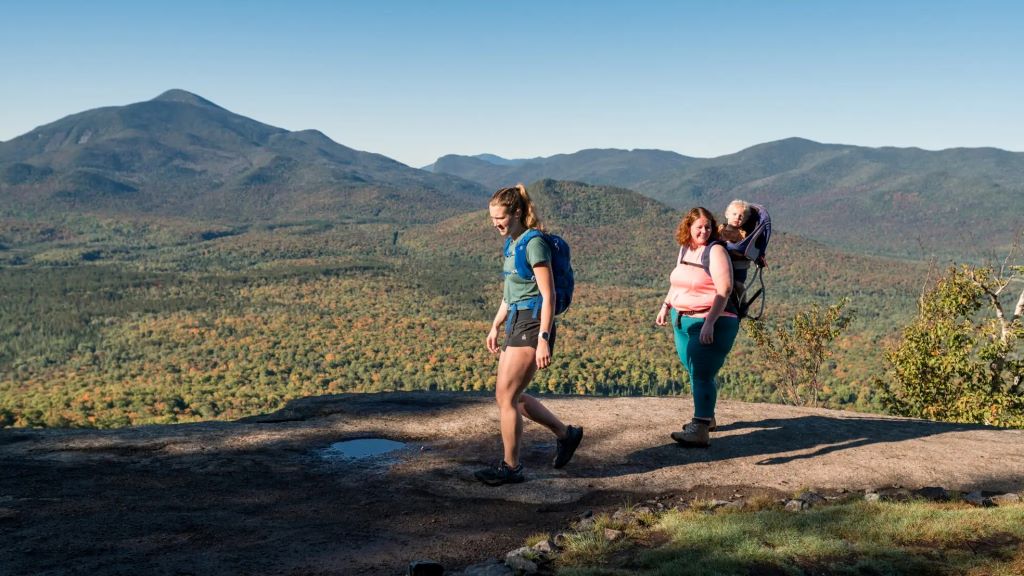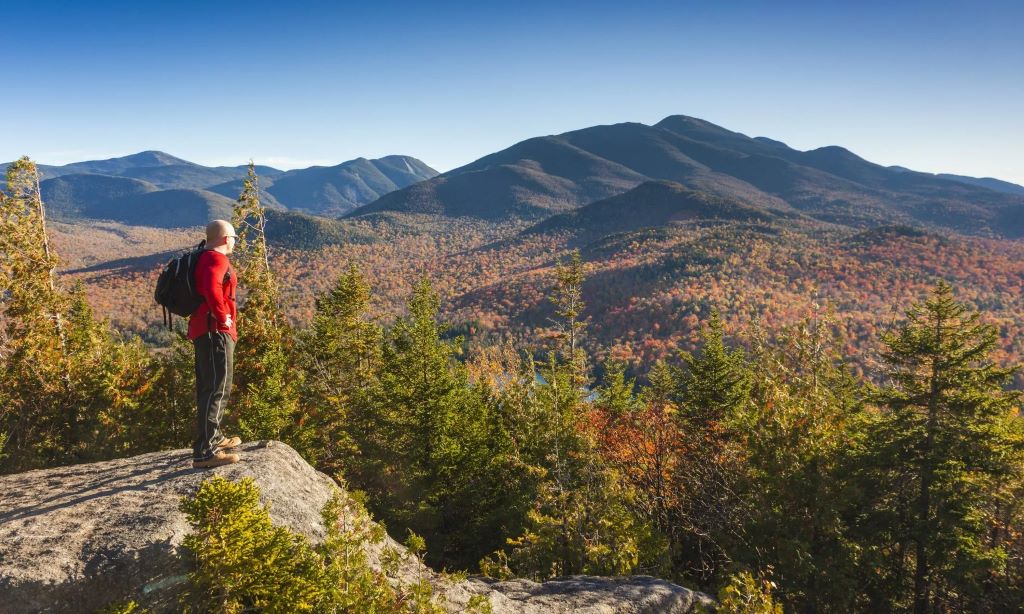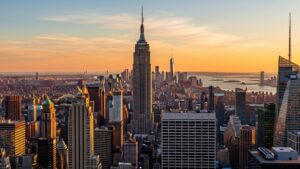Where to Hike in New York City | Parks, Trails And Outdoor Escapes

New York City might be famous for its towering skyscrapers and bustling streets, but hidden within the concrete jungle lies an impressive network of hiking trails and outdoor escapes that offer respite from urban life. From the rolling hills of Central Park to the rugged coastlines of Staten Island, the five boroughs provide diverse hiking experiences that cater to every fitness level and interest. Whether you’re a seasoned hiker or a weekend warrior looking to reconnect with nature, Newyorkbigevent.com serves as your comprehensive guide to discovering these urban oases that make outdoor adventures accessible right within city limits.
Many outdoor enthusiasts are surprised to learn that extensive hiking near NYC without car opportunities exist throughout the metropolitan area. Additionally, the city’s extensive public transportation system makes these natural sanctuaries easily accessible, eliminating the need for personal vehicles while opening doors to countless outdoor adventures. Therefore, both residents and visitors can explore pristine trails, observe diverse wildlife, and enjoy panoramic city views without ever leaving the five boroughs.
Manhattan: Urban Hiking Adventures
Manhattan offers surprising hiking opportunities despite its reputation as a concrete wilderness. Central Park stands as the crown jewel of urban hiking, featuring over 840 acres of rolling meadows, rocky outcroppings, and winding paths that challenge hikers while providing stunning city skyline views. The park’s North Woods area presents the most authentic hiking experience, with rugged terrain that includes waterfalls, streams, and dense forest canopy that makes you forget you’re in the heart of Manhattan.
However, Central Park represents just the beginning of Manhattan’s hiking possibilities. Fort Tryon Park, located in upper Manhattan, offers dramatic Hudson River views and houses the medieval art collection at The Cloisters. The park’s terraced gardens and steep hillside trails provide excellent cardiovascular workouts while showcasing diverse plant species and seasonal wildflower displays.
Inwood Hill Park presents Manhattan’s last remaining natural forest, where Native American caves and old-growth trees create an authentic wilderness experience. The park’s trail system winds through 196 acres of untouched woodland, offering glimpses of the Hudson River and opportunities to spot native wildlife including red-tailed hawks, woodpeckers, and various songbird species.
Brooklyn: Diverse Landscapes and Waterfront Trails
Brooklyn’s hiking scene combines waterfront promenades with inland parks that showcase the borough’s geographical diversity. Prospect Park, designed by the same landscape architects who created Central Park, features a 3.35-mile loop road perfect for hiking, along with interior trails that wind through meadows, woodlands, and around the scenic Prospect Lake.
Furthermore, the Brooklyn Bridge Park offers unique waterfront hiking experiences along the East River. The park’s 85 acres stretch across six piers, providing elevated walkways with unobstructed Manhattan skyline views. The park’s rolling hills, recreational areas, and native plant installations create diverse hiking environments that change dramatically with the seasons.
Marine Park represents Brooklyn’s largest park, encompassing 798 acres of salt marshes, grasslands, and wooded areas. The park’s trail system includes both paved and natural surface paths that wind through diverse ecosystems, making it an excellent destination for nature observation and bird watching throughout the year.
Queens: Hidden Gems and Natural Preserves
Queens houses some of New York City’s best-kept hiking secrets, including Flushing Meadows Corona Park, which covers 897 acres and served as the site for two World’s Fairs. The park’s extensive trail network connects various attractions while providing ample green space for hiking and outdoor recreation.
Moreover, Alley Pond Park offers 655 acres of diverse habitats including freshwater wetlands, oak woodlands, and kettle ponds formed during the last ice age. The park’s trail system includes the 1.8-mile Alley Pond Park Fitness Trail, which features exercise stations and interpretive signs that educate hikers about local ecology and wildlife.
Forest Park spans 538 acres across Queens and features some of the city’s most challenging hiking terrain. The park’s trail system includes steep hills, dense forests, and scenic overlooks that provide excellent cardiovascular workouts while showcasing the borough’s natural beauty and biodiversity.

The Bronx: Wilderness Within the City
The Bronx offers exceptional hiking opportunities that rival suburban and rural destinations. Van Cortlandt Park, spanning 1,146 acres, represents the fourth-largest park in New York City and features the Old Croton Aqueduct Trail, which follows the historic aqueduct route through varied terrain including wetlands, forests, and open meadows.
Additionally, Pelham Bay Park holds the distinction of being New York City’s largest park at 2,772 acres, offering extensive hiking opportunities throughout diverse ecosystems. The park includes the Kazimiroff Nature Trail, which winds through salt marshes and provides excellent bird watching opportunities, particularly during spring and fall migrations.
The New York Botanical Garden, while primarily known for its cultivated displays, also features natural hiking trails through the Thain Family Forest, a 50-acre old-growth forest that represents the original landscape of New York City before European settlement.
Staten Island: Coastal Hiking and Natural Preserves
Staten Island provides the most authentic hiking experiences within New York City’s five boroughs. The Staten Island Greenbelt encompasses 2,800 acres of connected parks and natural areas, featuring over 35 miles of hiking trails that wind through forests, wetlands, and meadows that support diverse wildlife populations.
Great Kills Park offers unique coastal hiking experiences along 580 acres of beaches, dunes, and woodlands. The park’s trail system provides access to pristine shoreline areas while offering opportunities to observe migratory birds, marine life, and native plant species adapted to coastal environments.
Conference House Park, located at Staten Island’s southern tip, combines historical significance with natural beauty. The park’s hiking trails provide stunning views of Raritan Bay while passing through diverse habitats that include beaches, meadows, and wooded areas rich in colonial history.
Transportation and Accessibility
New York City’s comprehensive public transportation system makes hiking destinations accessible without personal vehicles. The Metropolitan Transportation Authority operates subway lines, buses, and even ferry services that connect directly to major hiking locations throughout all five boroughs.
Therefore, hikers can easily plan car-free adventures using the MTA’s trip planner and real-time service updates. Many parks also offer bike-sharing stations and pedestrian-friendly access points that encourage sustainable transportation options while reducing environmental impact.
Also Read:
Safety and Preparation Tips
Urban hiking requires specific safety considerations that differ from traditional wilderness hiking. Hikers should inform others of their planned routes and expected return times, carry fully charged mobile phones, and remain aware of their surroundings at all times.
However, city hiking also offers unique advantages, including readily available emergency services, frequent park ranger patrols, and well-maintained trail systems with clear signage and regular maintenance schedules.
Proper preparation includes wearing appropriate footwear, carrying adequate water and snacks, and checking weather conditions before departing. Additionally, hikers should research park hours, seasonal closures, and any special regulations that might affect their planned activities.
Frequently Asked Questions
What are the best hiking trails in NYC for beginners?
Central Park’s main loop road and Prospect Park’s perimeter trail offer excellent beginner-friendly options with paved surfaces, clear signage, and minimal elevation changes. Both locations provide restroom facilities, water fountains, and easy access to public transportation.
Can I hike in NYC parks after dark?
Most NYC parks close at sunset for safety reasons, though specific hours vary by season and location. Some larger parks like Central Park and Prospect Park remain open until 1 AM with restricted access to certain areas. Always check individual park regulations before planning evening activities.
Are dogs allowed on NYC hiking trails?
Dogs are permitted on most NYC park trails but must remain on leash at all times except in designated off-leash areas. Dog owners are required to clean up after their pets and carry waste bags. Some sensitive ecological areas may restrict dog access entirely.
What’s the best time of year for hiking in NYC?
Spring (April-May) and fall (September-November) offer ideal hiking conditions with comfortable temperatures and beautiful seasonal foliage. Summer can be hot and humid, while winter hiking is possible but requires appropriate cold-weather gear and awareness of icy conditions.
Do I need permits for hiking in NYC parks?
Individual hiking does not require permits in NYC parks. However, organized group activities with more than 20 people may need special use permits. Commercial activities, including professional photography and guided tours for profit, typically require advance permission from the Parks Department.
Conclusion
New York City’s hiking opportunities extend far beyond what most people imagine, offering diverse outdoor experiences that rival destinations hundreds of miles from urban centers. From Central Park’s iconic landscapes to Staten Island’s pristine coastal trails, the five boroughs provide countless opportunities for outdoor recreation, fitness, and nature appreciation. These urban hiking destinations prove that adventure and natural beauty exist alongside city life, making outdoor exploration accessible to millions of residents and visitors throughout the year.
The extensive public transportation network eliminates barriers to accessing these natural spaces, while well-maintained trail systems and safety infrastructure ensure positive experiences for hikers of all skill levels. Whether seeking a quick lunch break escape or planning a full day of outdoor adventure, New York City’s hiking trails offer something for everyone willing to explore beyond the typical tourist destinations and discover the wild side of America’s largest metropolis.
Read More: 7 Less Touristy Prague Day Trips You’ll Absolutely Love








